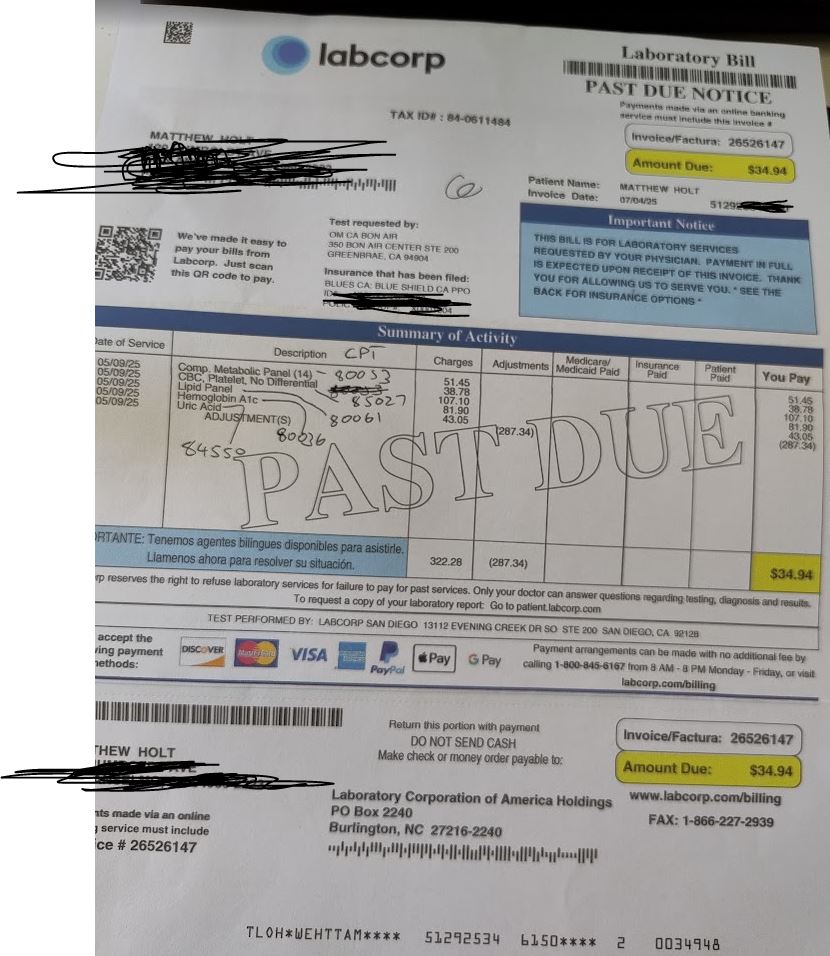By MATTHEW HOLT
So I am back dealing with Labcorp & Blue Shield of California over the mysterious $34.94 copay. If you want to catch up go here
Over the weekend Labcorp sent me a final due notice on my bill…. the one that they couldn’t tell me about without asking for all the information they already had.
I call Labcorp customer service in the Philipinnes. The friendly rep says that they have had a message saying that “the insurance company requires that Labcorp provides documentation from the ordering physician”. What documentation, I ask? A letter that tells them what the updated codes are. Given that the Brown & Toland Physicians rep told me those codes and they must have been sent them by Labcorp when Labcorp sent in the claim, that seems to make no sense. I’m not yet prepared to ask my doctor’s office to get involved in this! (Better look out though, Andrew Diamond!). So I’ll let that go for a moment.
However, Labcorp says that they received an EOB from Blue Shield of California PPO–it had my correct member number even though I am an HMO not PPO member. No the EOB did not come from the IPA Brown & Toland Physicians, and yes I asked very precisely. The EOB says the co-pay is $34.94. Labcorp can’t ascribe it to any one of the 5 individual lab tests (which all look preventative under the ACA to me but maybe one isn’t). So the $34.94 is the copay from the EOB that Blue Shield of California sent to Labcorp.
They asked me for my copy of the EOB. I sent one 5 days ago, but sent it again just to be sure.
Next up, asking Blue Shield of California what precisely they sent to Labcorp saying my co-pay is $34.94 when the one they sent me (well have on their website) says $0. Oh and by the way, the standard copay for labs on my plan is $50, not $34.94!
On my Blue Shield of California member portal there’s a message with a letter. Apparently they opened a customer grievance for me! I called the customer grievance number in the letter. According the answering IVR message there is a chat option for providers with grievances, but not one for consumers. My hold time is estimated at 20 minutes. A nice rep called Susie comes on in only 15 mins.
After verifying that she knows who I am she says there are 2 different grievances! One is an appeal for the lab test & one is a complaint about the process, both opened August 12. I suspect they were initiated by the nice man from the Executive office who called me on that day. Rep Susie is limited to telling me that appeal status. But she tells me that an appeal coordinator is looking into the complaint and will be back in touch within 30 days. AND she gives me an email to reach said coordinator at! So I sent that person an email….lets see what happens!
Matthew Holt is the founder and publisher of THCB
















